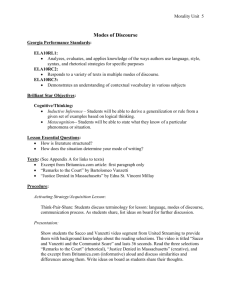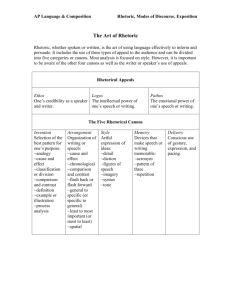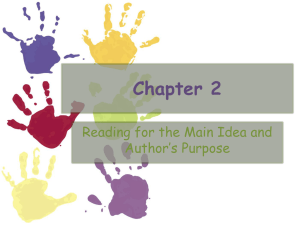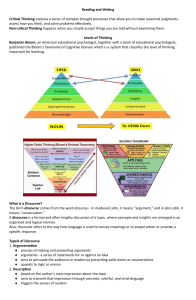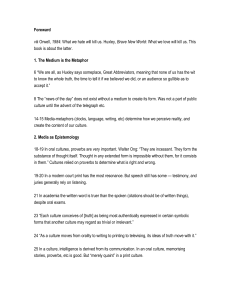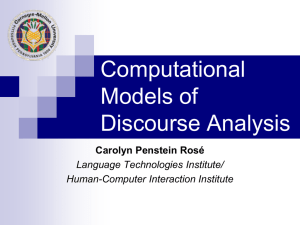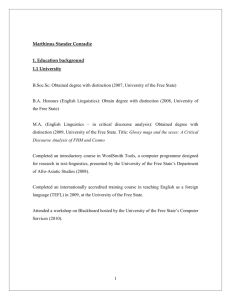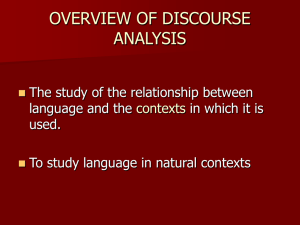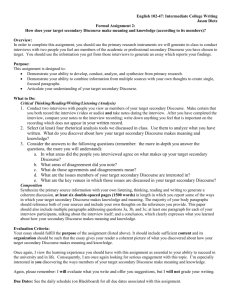Modes of Discourse: AP Language & Composition Guide
advertisement
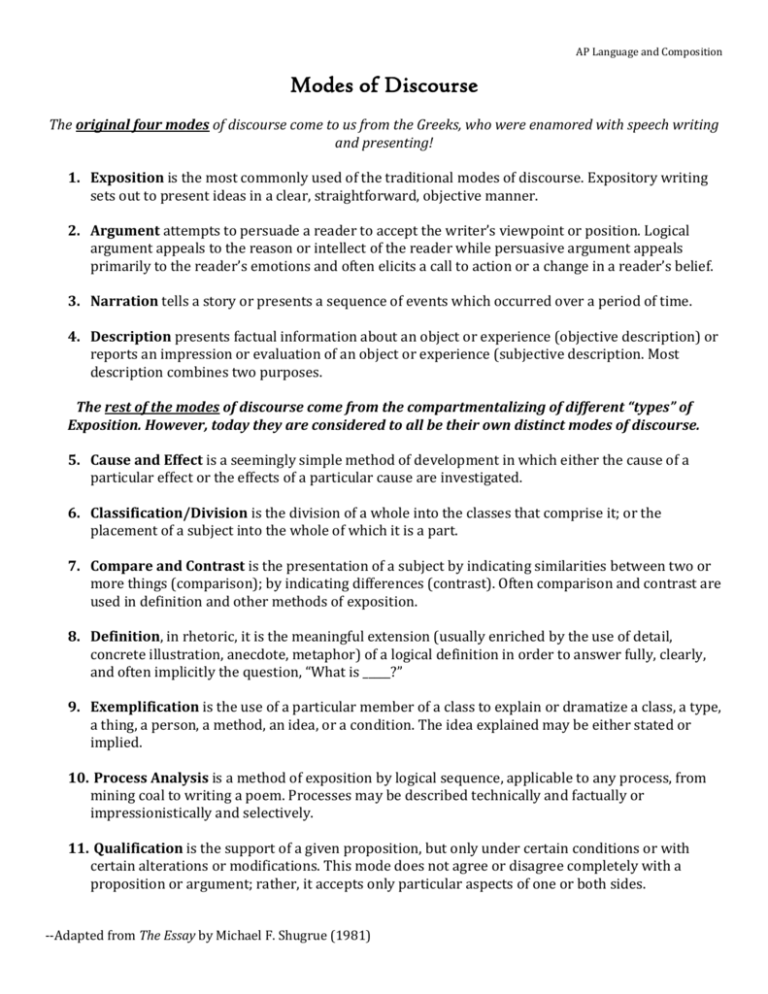
AP Language and Composition Modes of Discourse The original four modes of discourse come to us from the Greeks, who were enamored with speech writing and presenting! 1. Exposition is the most commonly used of the traditional modes of discourse. Expository writing sets out to present ideas in a clear, straightforward, objective manner. 2. Argument attempts to persuade a reader to accept the writer’s viewpoint or position. Logical argument appeals to the reason or intellect of the reader while persuasive argument appeals primarily to the reader’s emotions and often elicits a call to action or a change in a reader’s belief. 3. Narration tells a story or presents a sequence of events which occurred over a period of time. 4. Description presents factual information about an object or experience (objective description) or reports an impression or evaluation of an object or experience (subjective description. Most description combines two purposes. The rest of the modes of discourse come from the compartmentalizing of different “types” of Exposition. However, today they are considered to all be their own distinct modes of discourse. 5. Cause and Effect is a seemingly simple method of development in which either the cause of a particular effect or the effects of a particular cause are investigated. 6. Classification/Division is the division of a whole into the classes that comprise it; or the placement of a subject into the whole of which it is a part. 7. Compare and Contrast is the presentation of a subject by indicating similarities between two or more things (comparison); by indicating differences (contrast). Often comparison and contrast are used in definition and other methods of exposition. 8. Definition, in rhetoric, it is the meaningful extension (usually enriched by the use of detail, concrete illustration, anecdote, metaphor) of a logical definition in order to answer fully, clearly, and often implicitly the question, “What is _____?” 9. Exemplification is the use of a particular member of a class to explain or dramatize a class, a type, a thing, a person, a method, an idea, or a condition. The idea explained may be either stated or implied. 10. Process Analysis is a method of exposition by logical sequence, applicable to any process, from mining coal to writing a poem. Processes may be described technically and factually or impressionistically and selectively. 11. Qualification is the support of a given proposition, but only under certain conditions or with certain alterations or modifications. This mode does not agree or disagree completely with a proposition or argument; rather, it accepts only particular aspects of one or both sides. --Adapted from The Essay by Michael F. Shugrue (1981)
